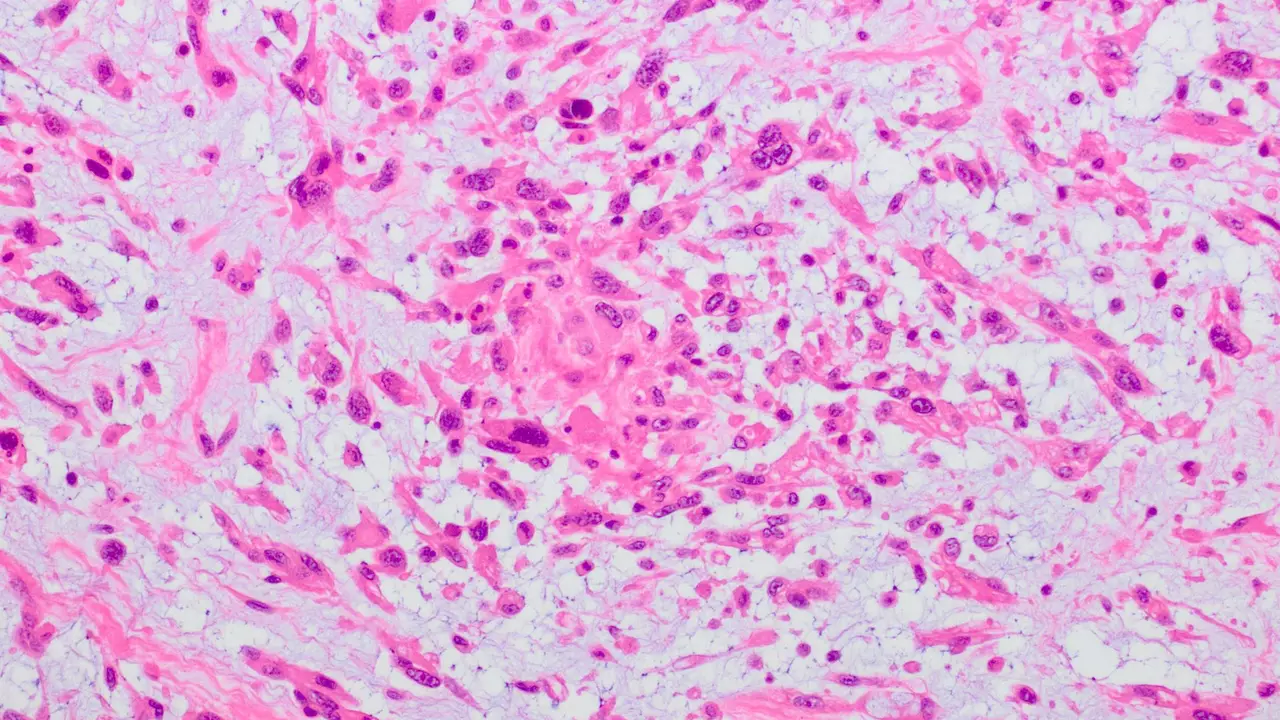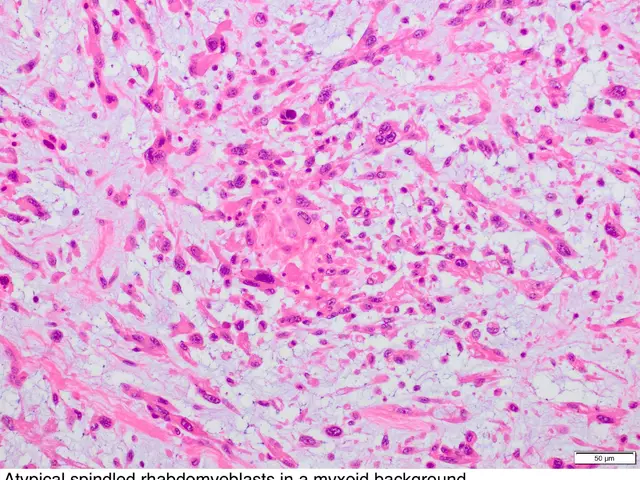Understanding Rhabdomyosarcoma
Rhabdomyosarcoma is a rare form of cancer that typically affects children, although it can occur at any age. It is a type of soft tissue sarcoma that develops from skeletal muscle cells that have failed to fully differentiate. It can occur in various places in the body, often presenting in the head and neck region, urinary and reproductive organs, or the arms and legs. Despite its rarity, understanding this cancer and its potential risk factors is crucial for early detection and treatment.
The Role of Genetics in Rhabdomyosarcoma
Genetics play a significant role in the development of rhabdomyosarcoma. Certain genetic conditions, such as Li-Fraumeni syndrome, neurofibromatosis type 1, and Costello syndrome, have been linked to an increased risk of this cancer. While a family history of these conditions can raise the risk, many cases occur without any known genetic predisposition. It is also important to note that having one of these genetic conditions does not necessarily mean a person will develop rhabdomyosarcoma, it simply increases the risk.
Environment and Rhabdomyosarcoma: Is There a Connection?
While the role of genetics in rhabdomyosarcoma is more clear, the potential link between this cancer and environmental factors is less understood. Some studies have suggested a possible connection between exposure to certain viruses, radiation, or chemicals, and an increased risk of rhabdomyosarcoma. However, more research is needed to definitively establish these links. It's also crucial to remember that exposure to these potential risk factors doesn't guarantee the development of this cancer, but it may increase the risk.
Understanding the Impact of Lifestyle Factors
Lifestyle factors, such as diet and exercise, have a significant impact on overall health and can influence the risk of developing various types of cancer. However, when it comes to rhabdomyosarcoma, the influence of lifestyle factors is still largely unknown. As it primarily affects children, the focus is often on parental lifestyle factors during pregnancy. Some studies have suggested that maternal use of certain drugs during pregnancy may increase the risk, but these findings have not been consistently replicated.
Steps Towards Early Detection and Prevention
Given the rarity and often aggressive nature of rhabdomyosarcoma, early detection is vital. Regular check-ups and awareness of the signs and symptoms, such as a lump or swelling, pain, and problems with urination or bowel movements, are crucial. Prevention strategies are less clear, due to the lack of known modifiable risk factors. However, maintaining a healthy lifestyle and minimizing exposure to potential environmental risk factors may help reduce the risk.
Future Research Directions in Rhabdomyosarcoma
There is still much to learn about rhabdomyosarcoma and its potential risk factors. Future research should continue to investigate the potential links between this cancer and environmental factors, as well as exploring the role of lifestyle factors. It's also important to develop more effective early detection strategies and treatments. Through continued research, we can better understand this rare cancer and work towards improving outcomes for those affected.




KALPESH GANVIR
June 29, 2023 at 16:00I've been reading up on this since my cousin's kid was diagnosed last year. It's heartbreaking how little we know about environmental triggers. Even just knowing what to avoid during pregnancy could make a huge difference for families like ours.
April Barrow
June 30, 2023 at 07:37The genetic links are well documented but the environmental data is still too fragmented to draw any real conclusions. We need longitudinal studies with controlled exposure variables.
Melody Jiang
July 2, 2023 at 03:45It's funny how we treat cancer like it's a puzzle with one missing piece. But maybe rhabdomyosarcoma isn't about one cause-it's about the convergence of biology, timing, and chance. We're still trying to map the storm with a flashlight.
alex terzarede
July 2, 2023 at 22:33Maternal drug use studies are notoriously noisy. Confounding variables like socioeconomic status, prenatal care access, and even stress levels aren't adequately accounted for. Correlation ≠ causation, especially in pediatric cancers.
Dipali patel
July 4, 2023 at 16:40YALL NOT TALKING ABOUT THE 5G TOWERS NEAR THE HOSPITALS?? I READ ON A FORUM THAT THE RADIATION KILLS THE CELL'S 'DNA REPAIR MODE' AND THEN BAM-Rhabdo. Also glyphosate in baby food. They're hiding it. I have 37 screenshots.
Jasmine L
July 6, 2023 at 14:54This is such an important topic. I wish more parents knew what signs to look for-especially that weird swelling that doesn't go away. My niece had one for months before anyone took it seriously 😔
lisa zebastian
July 6, 2023 at 19:10Let's be real-this is all Big Pharma's distraction tactic. If they admitted environmental toxins were the main driver, they'd have to shut down 80% of the chemical industry. Rhabdomyosarcoma is just collateral damage from profit-driven negligence.
Jessie Bellen
July 7, 2023 at 02:55Stop pretending lifestyle doesn't matter. Mom drank soda during pregnancy? Kid gets rhabdo. It's that simple. You're just scared to say it.
Jasmine Kara
July 7, 2023 at 09:03i think the real issue is that we dont test pregnant women for toxins enough. like, why not? its not that hard to check blood for heavy metals or pesticides. we do it for everything else.
Richie Lasit
July 8, 2023 at 14:10We can't wait for perfect data. Every day we delay action, more kids are at risk. Let's push for stricter regulations on known carcinogens-especially in food packaging and toys. Better safe than sorry, right?
arthur ball
July 10, 2023 at 07:39I swear, every time I see a kid with a lump, I think 'this could be it.' My buddy's son had a lump on his thigh for 6 months before anyone did anything. Now he's in remission, but man... it broke me. If you notice anything weird, push. Push hard. Don't wait for 'it might go away.'
Harrison Dearing
July 11, 2023 at 05:37I get why people want simple answers... but cancer isn't a villain we can punch. It's a system failure. And until we fix the whole system-environment, healthcare access, research funding-we're just putting bandaids on a hemorrhage. 🤷♂️
Justice Ward
July 13, 2023 at 04:03The quietest tragedy here isn't the cancer-it's the silence around it. No celebrity fundraisers, no pink ribbons, no viral TikToks. Just parents Googling symptoms at 3 a.m., hoping it's nothing. We owe these kids more than hope. We owe them attention.